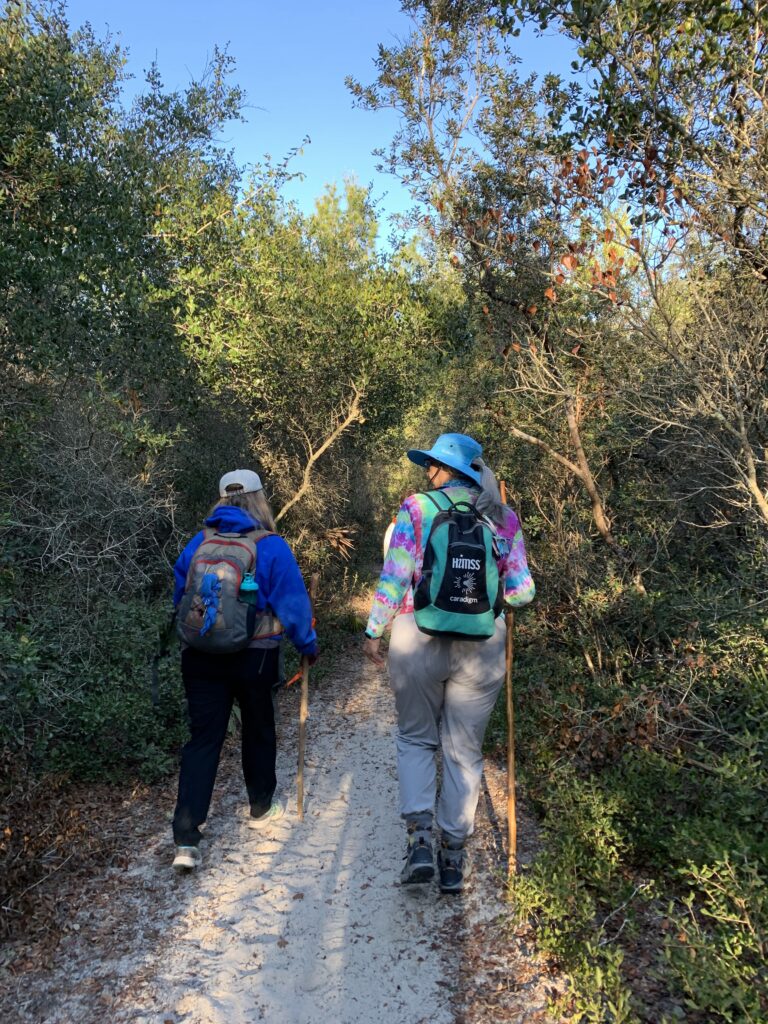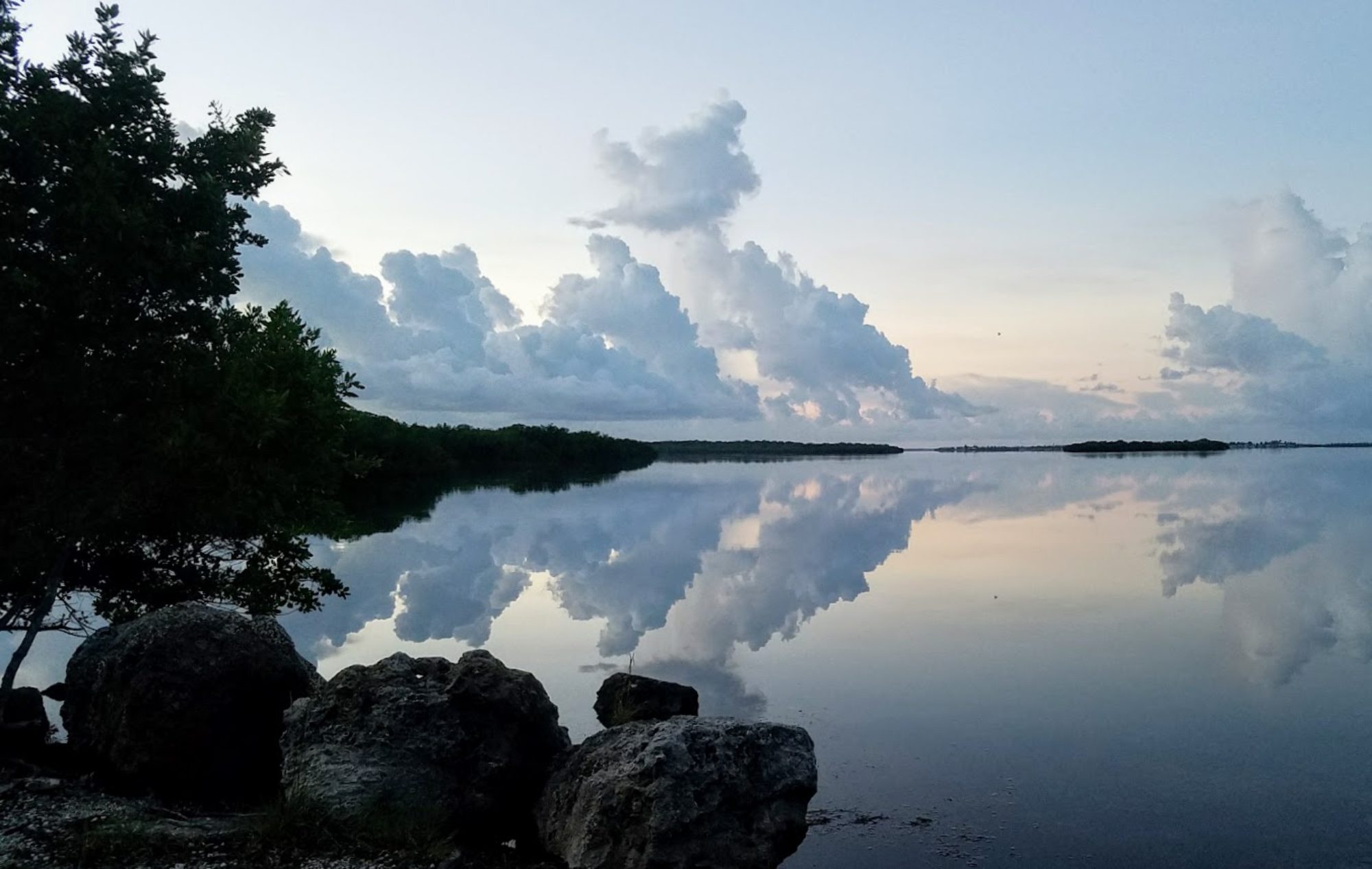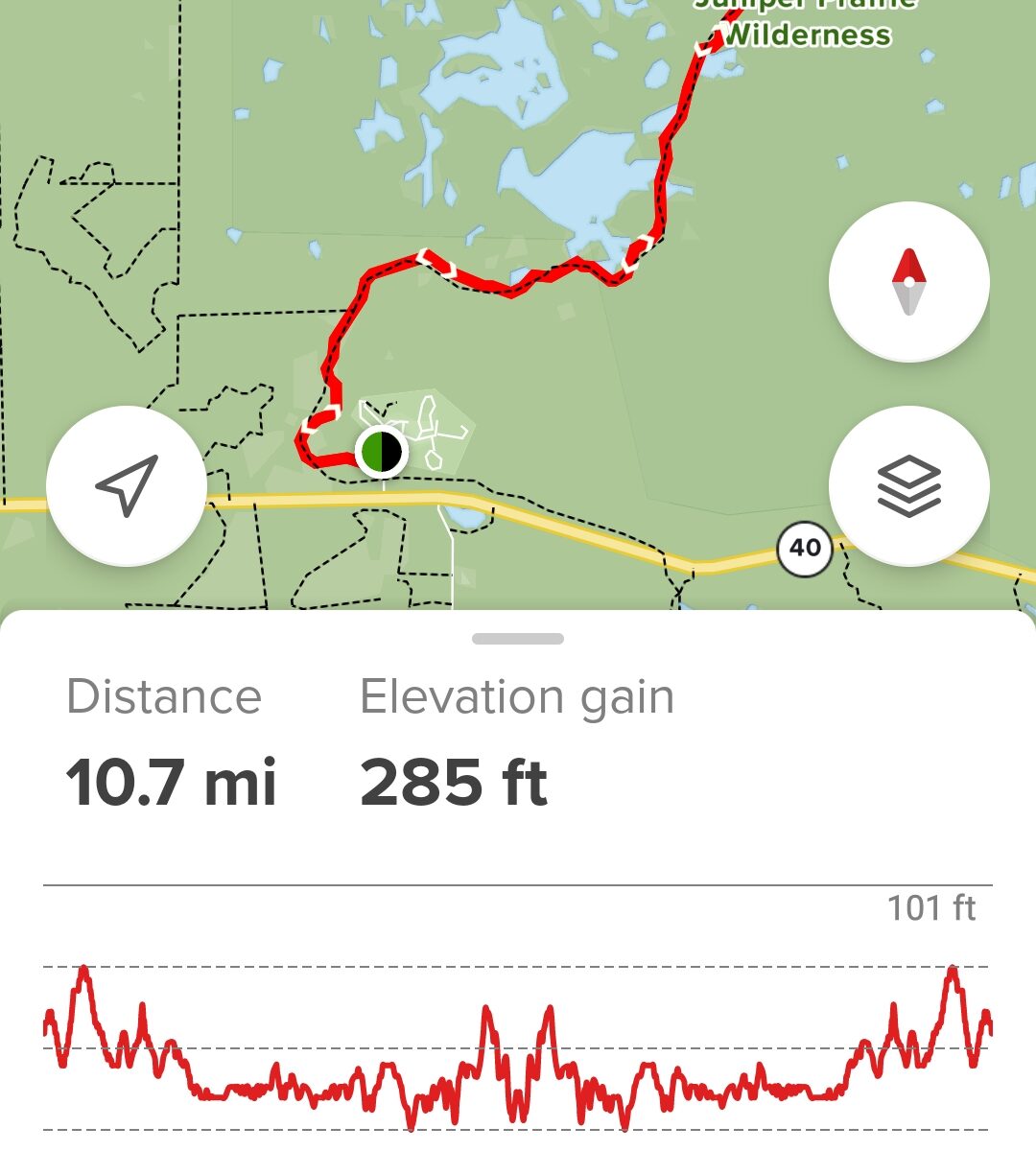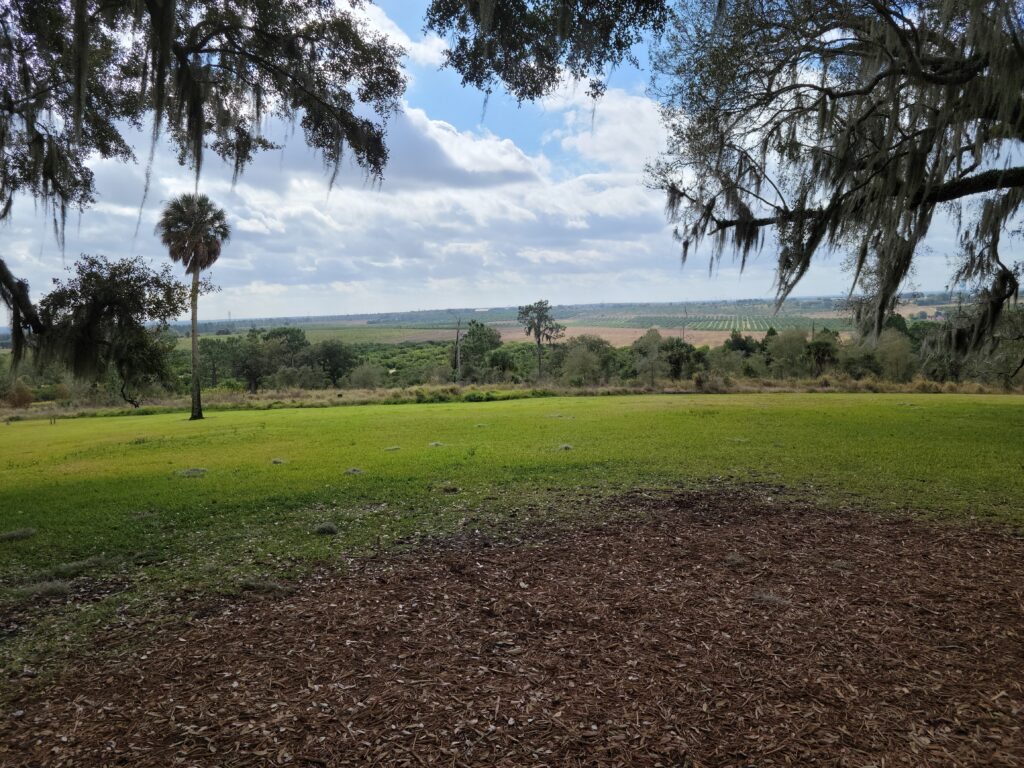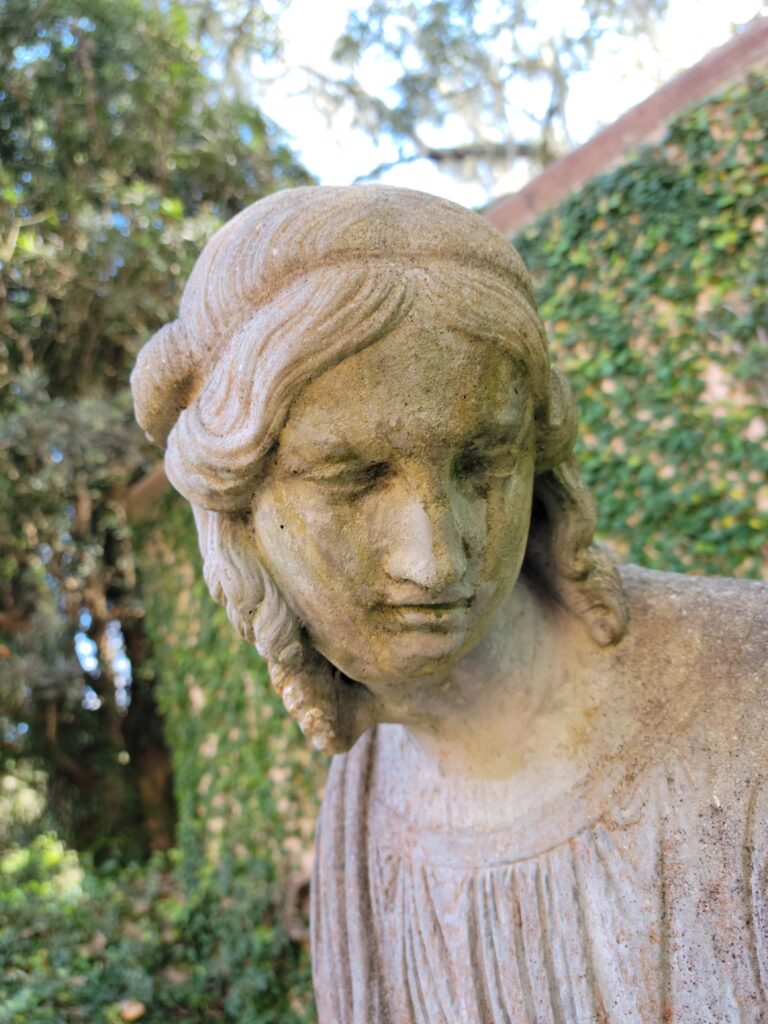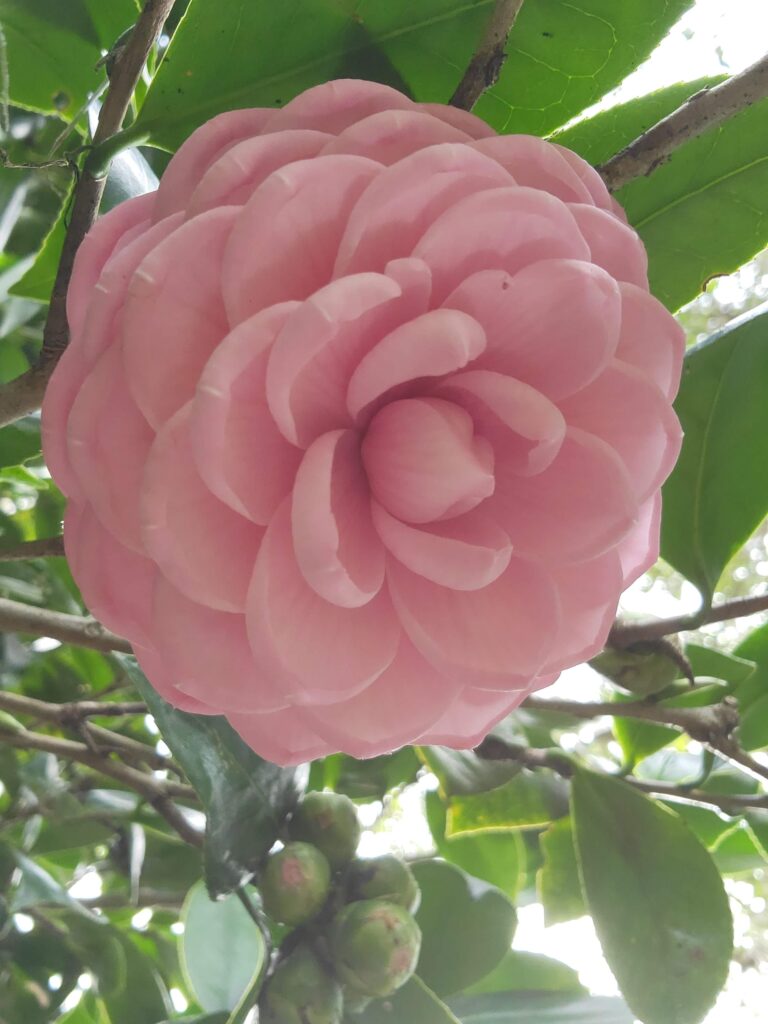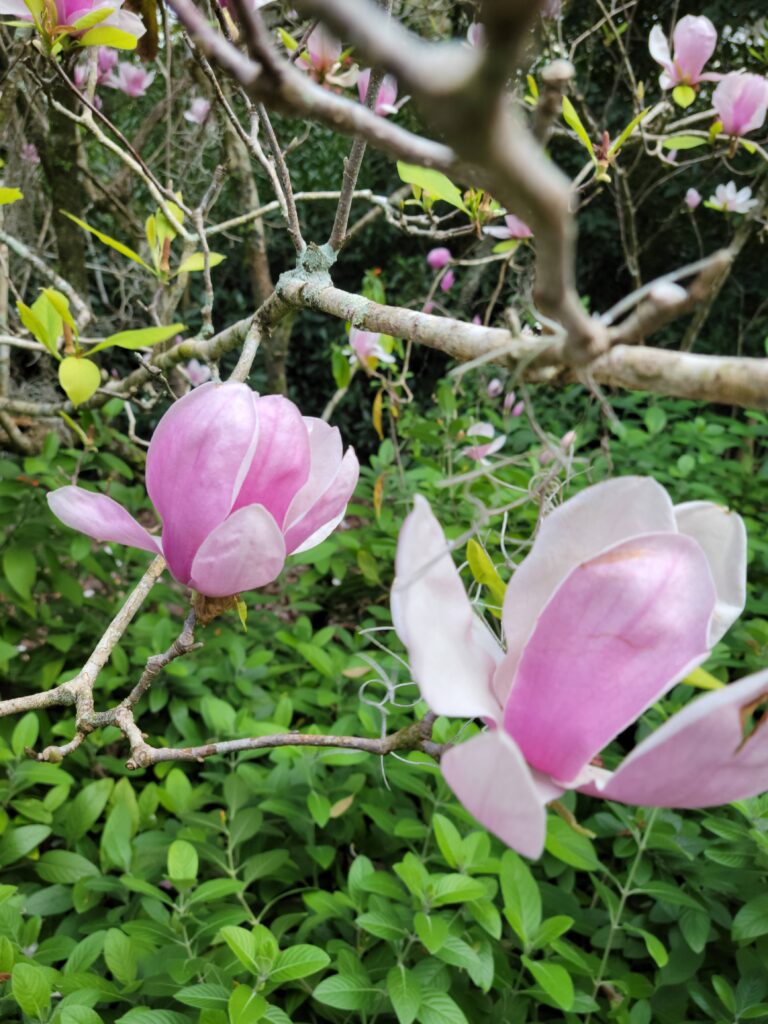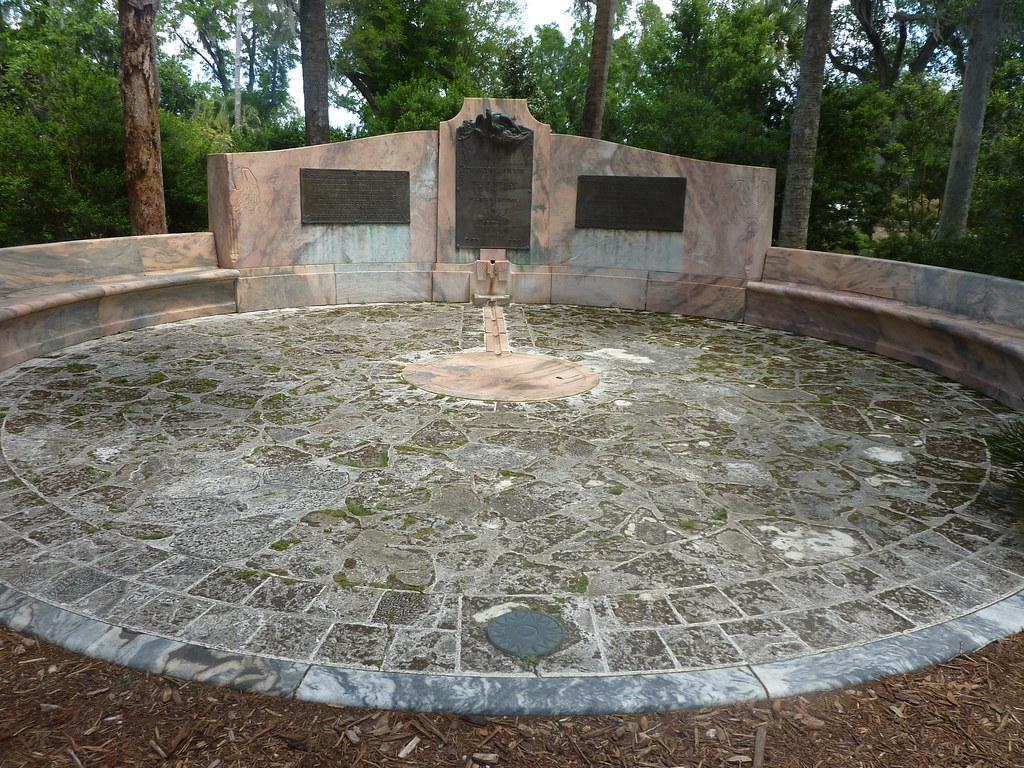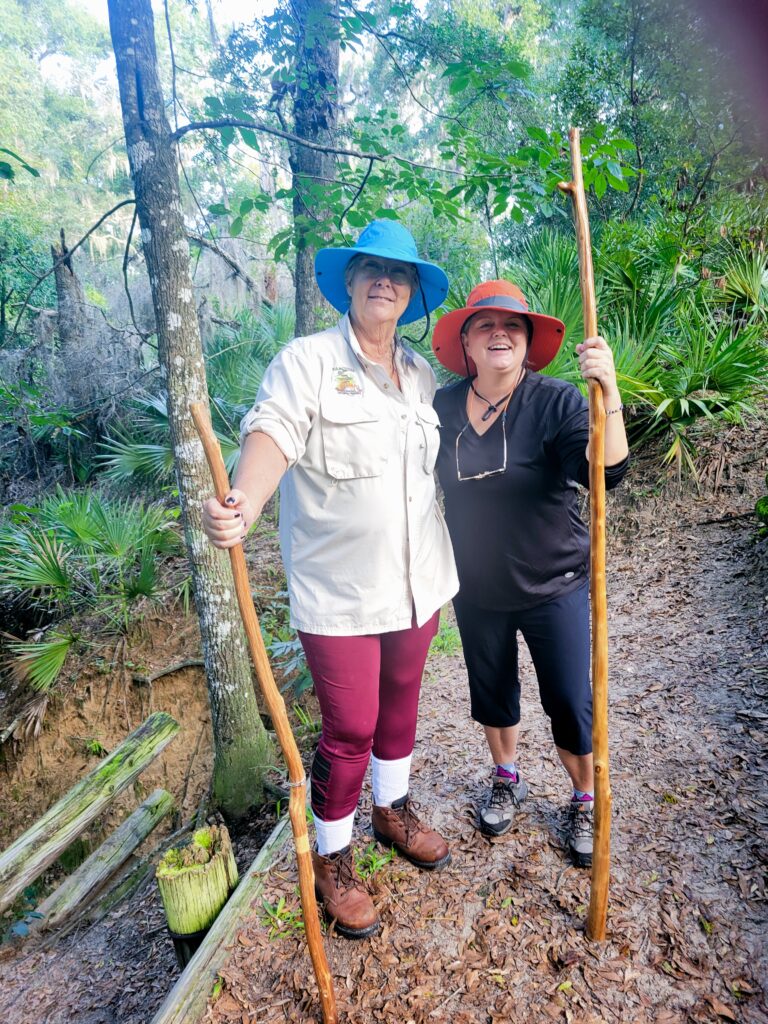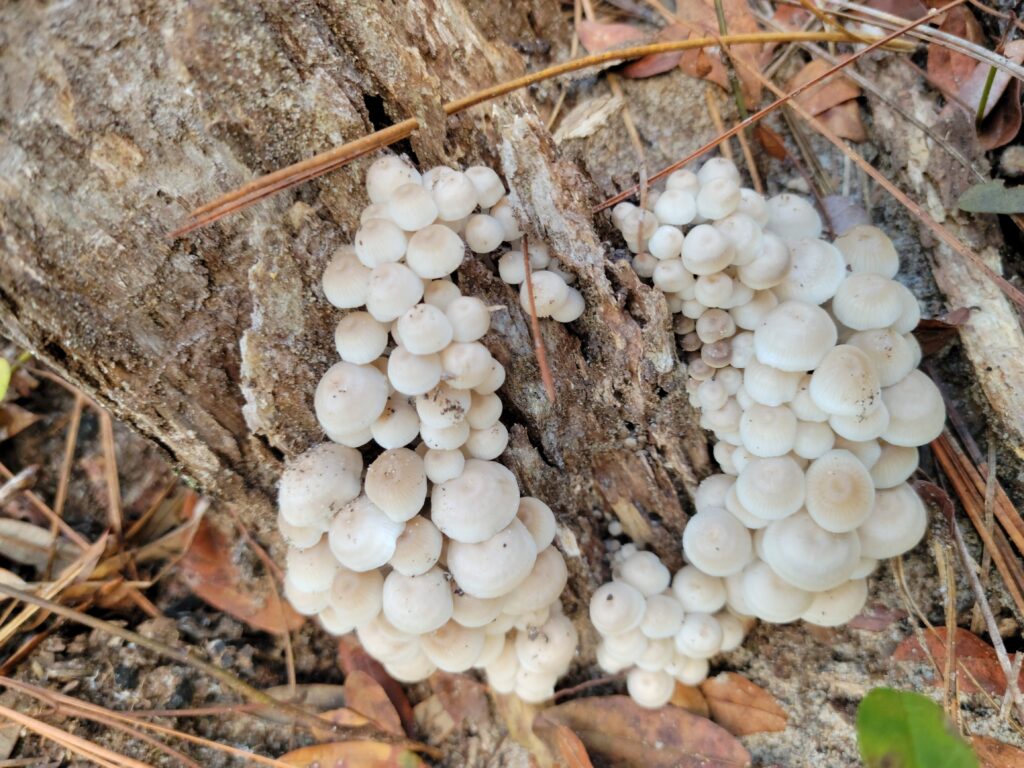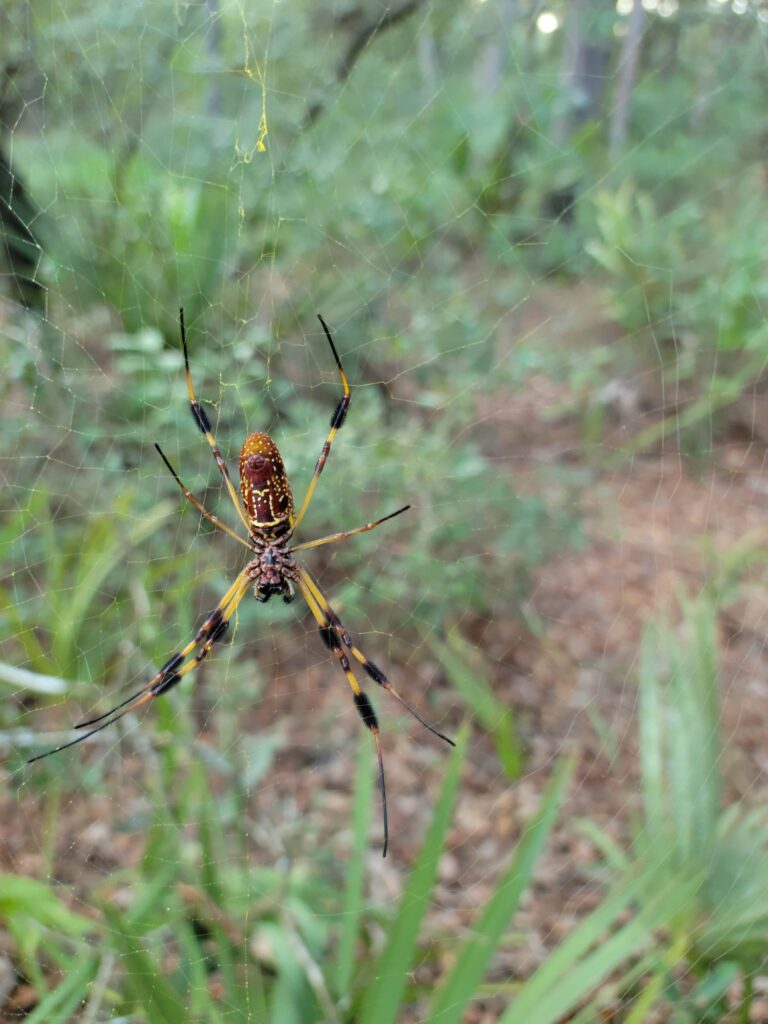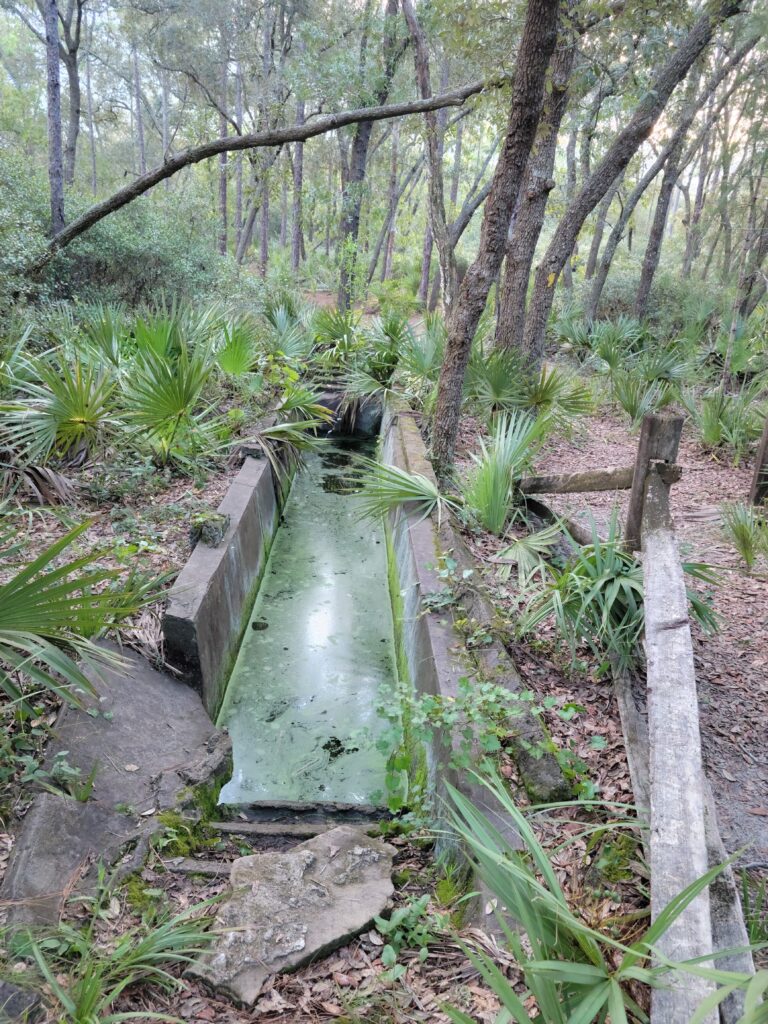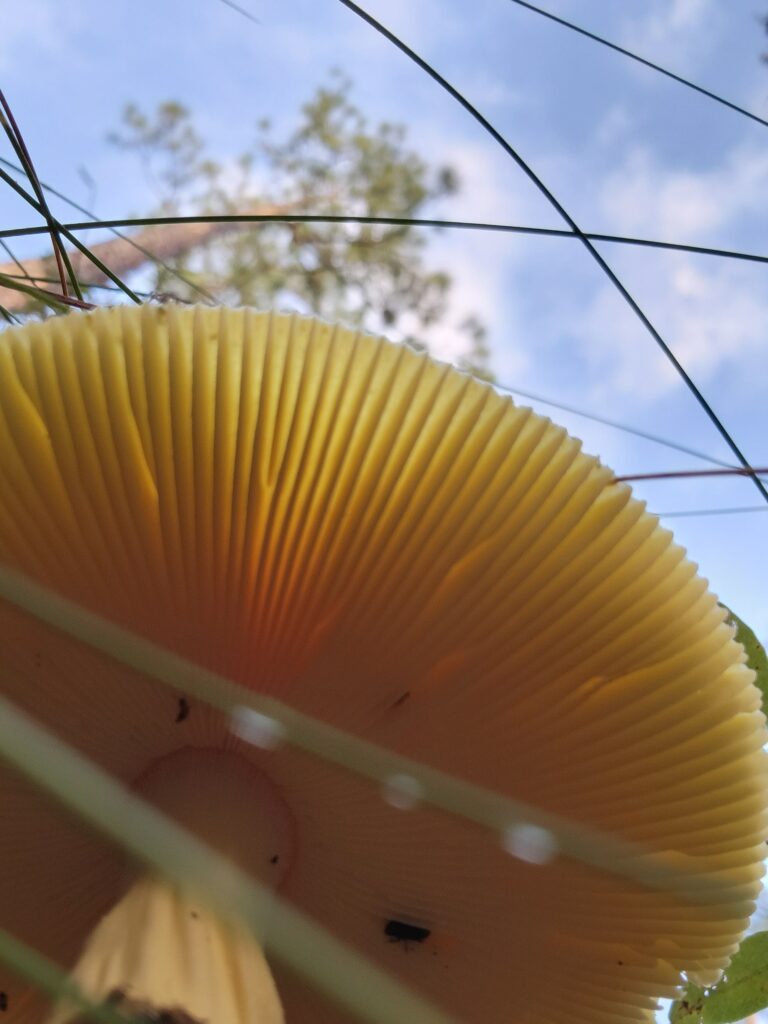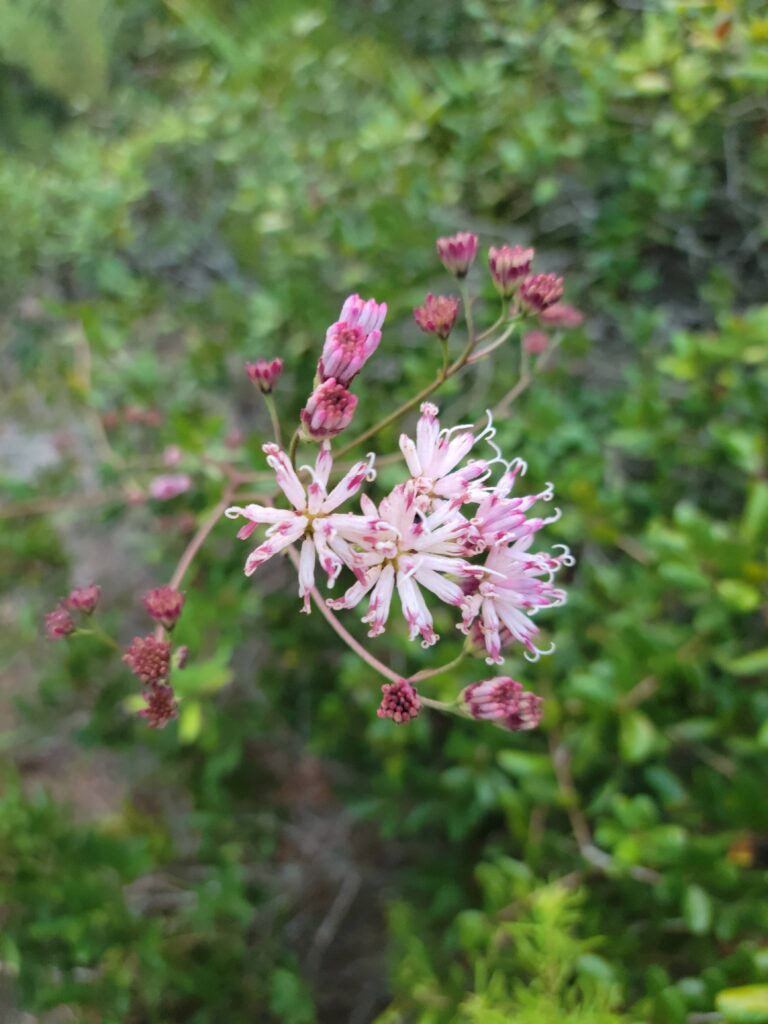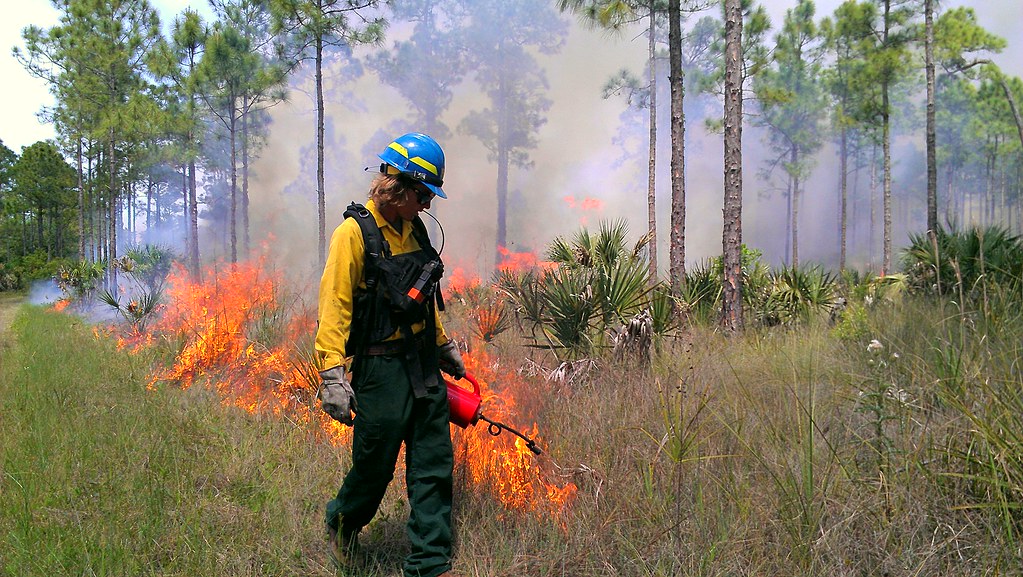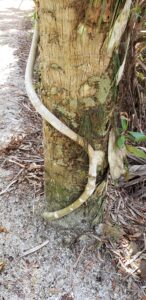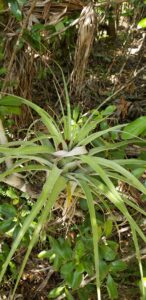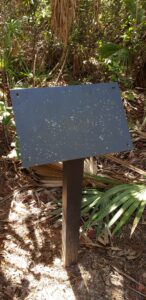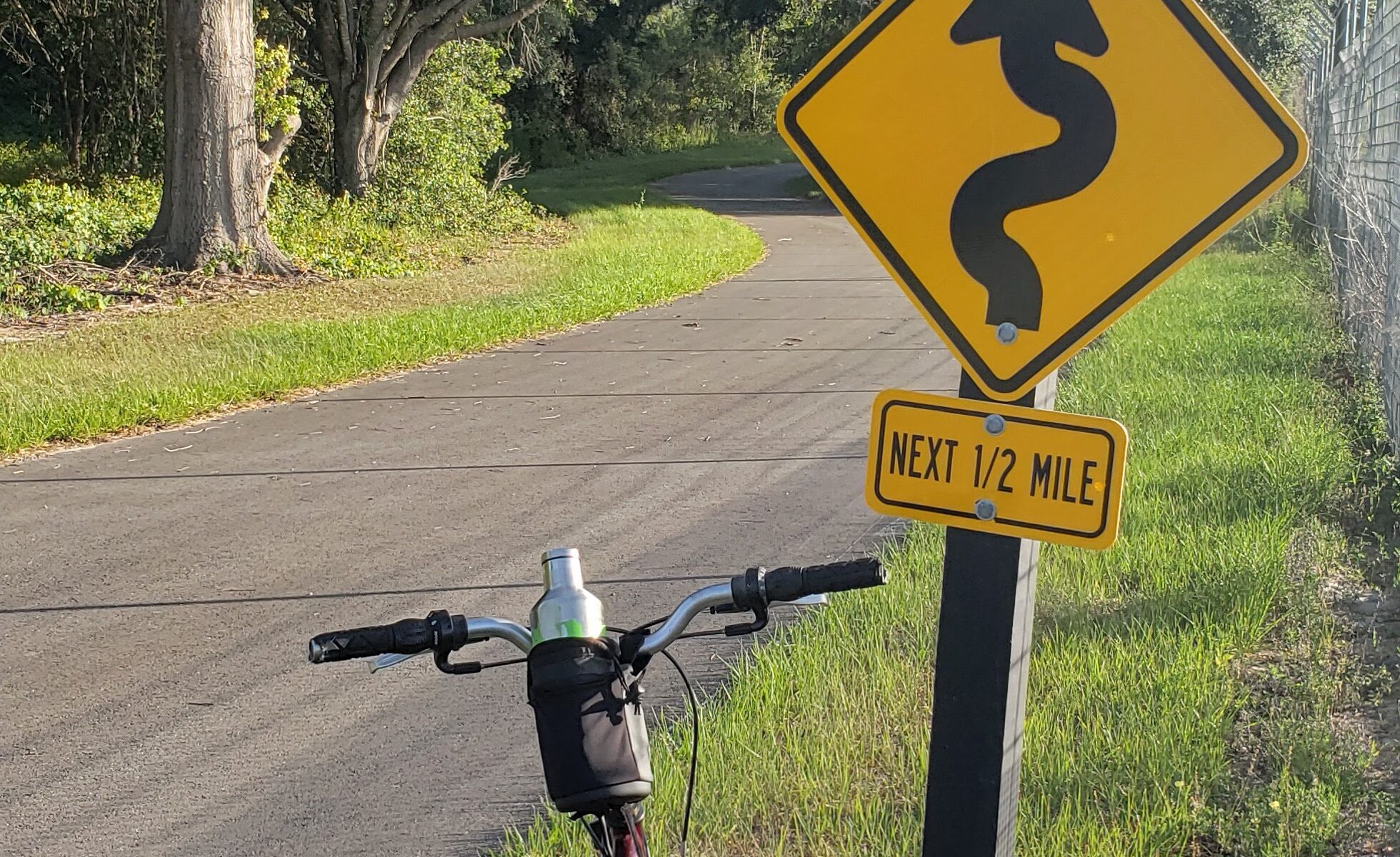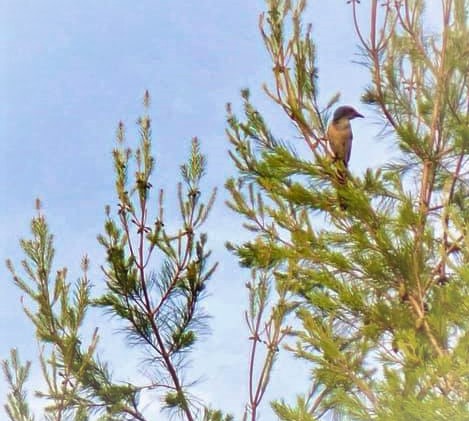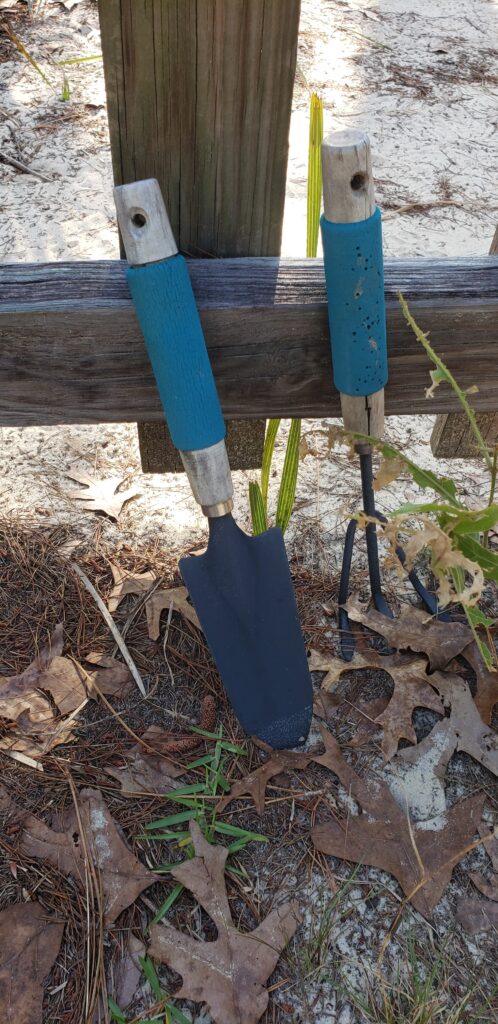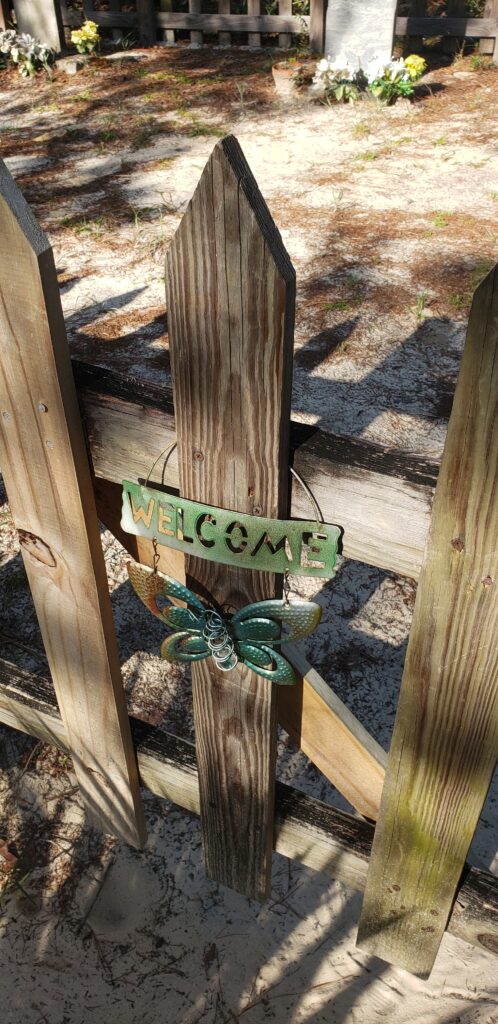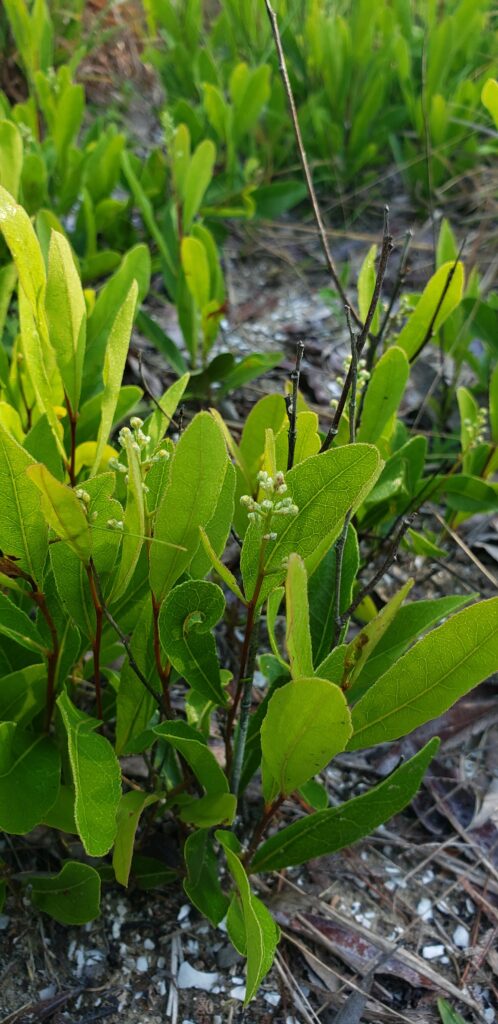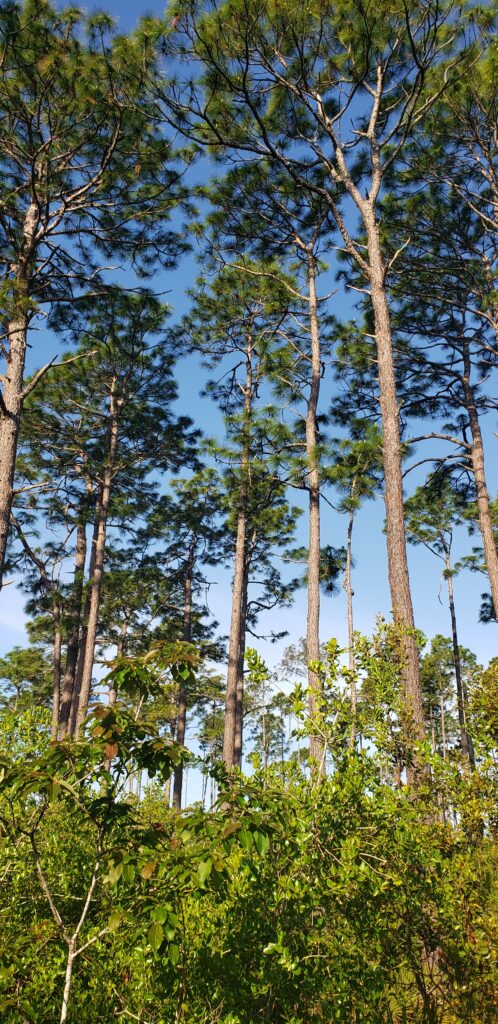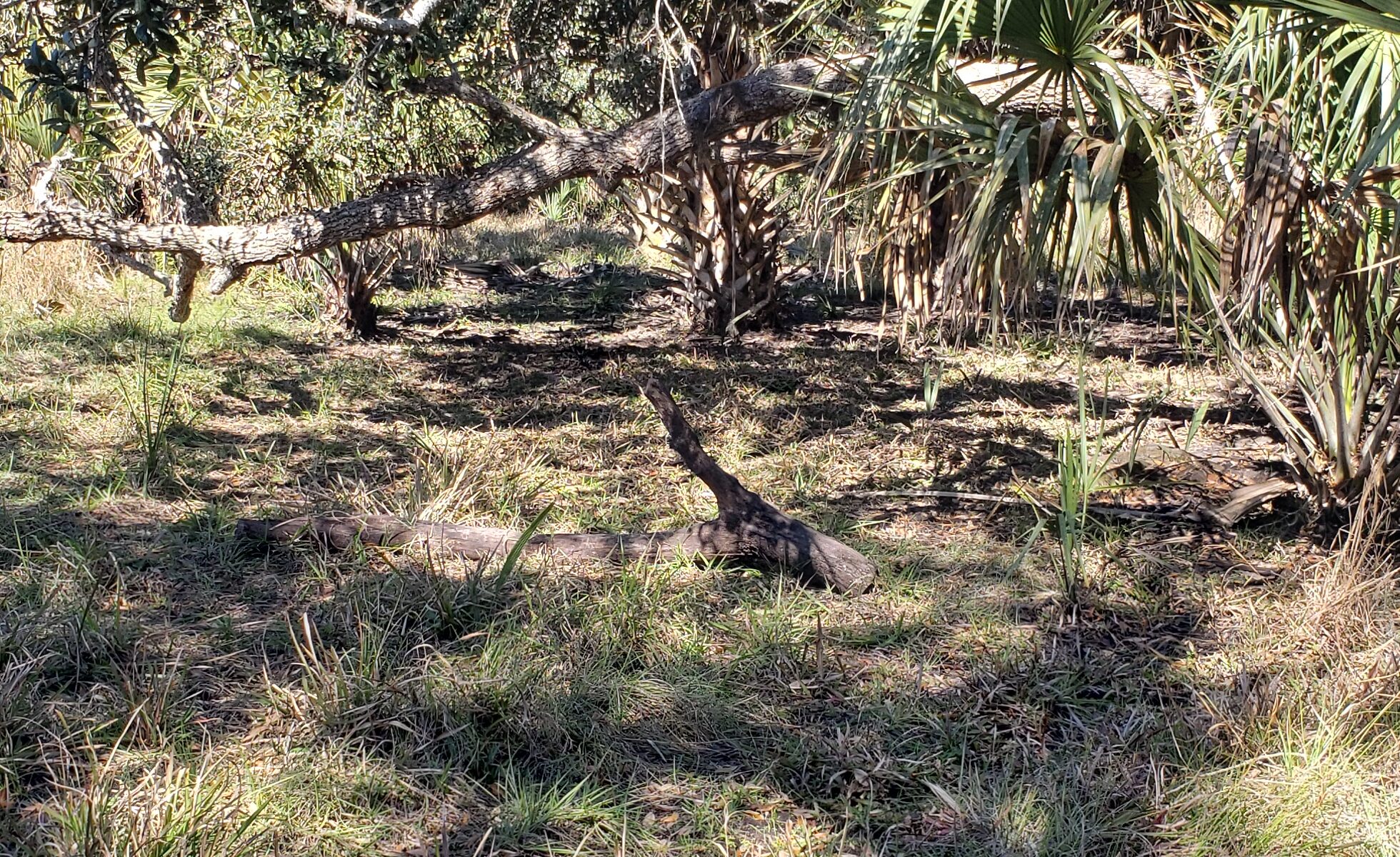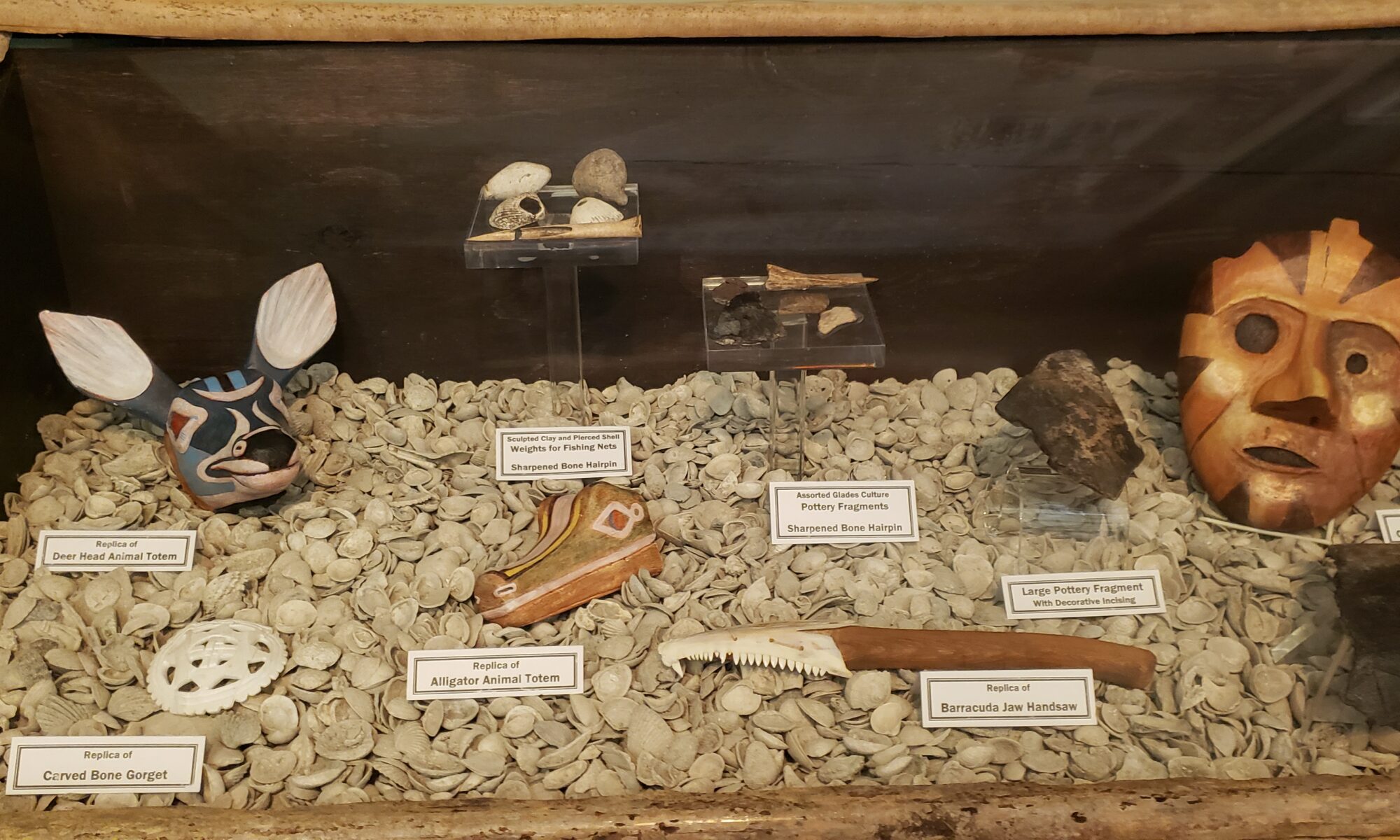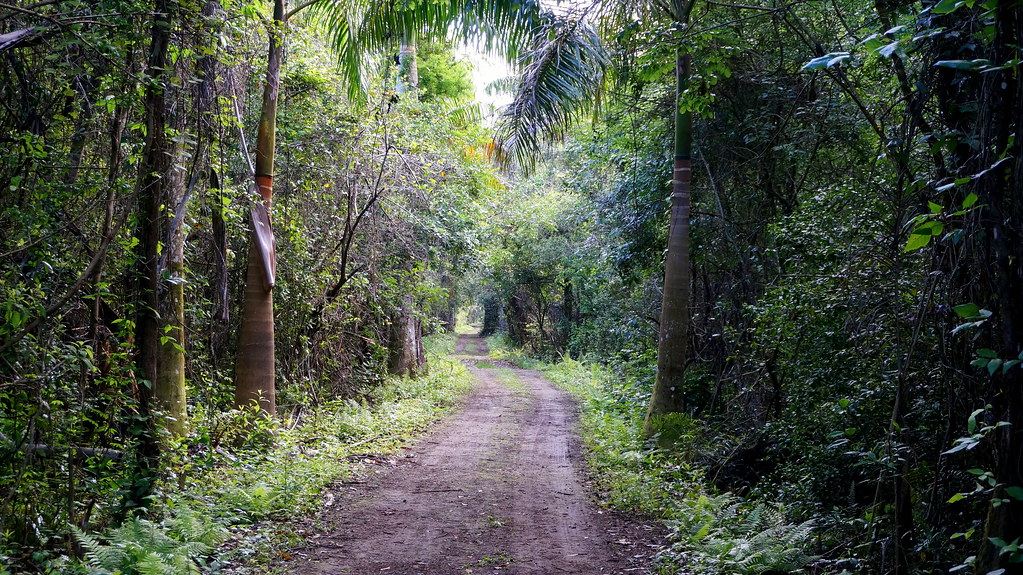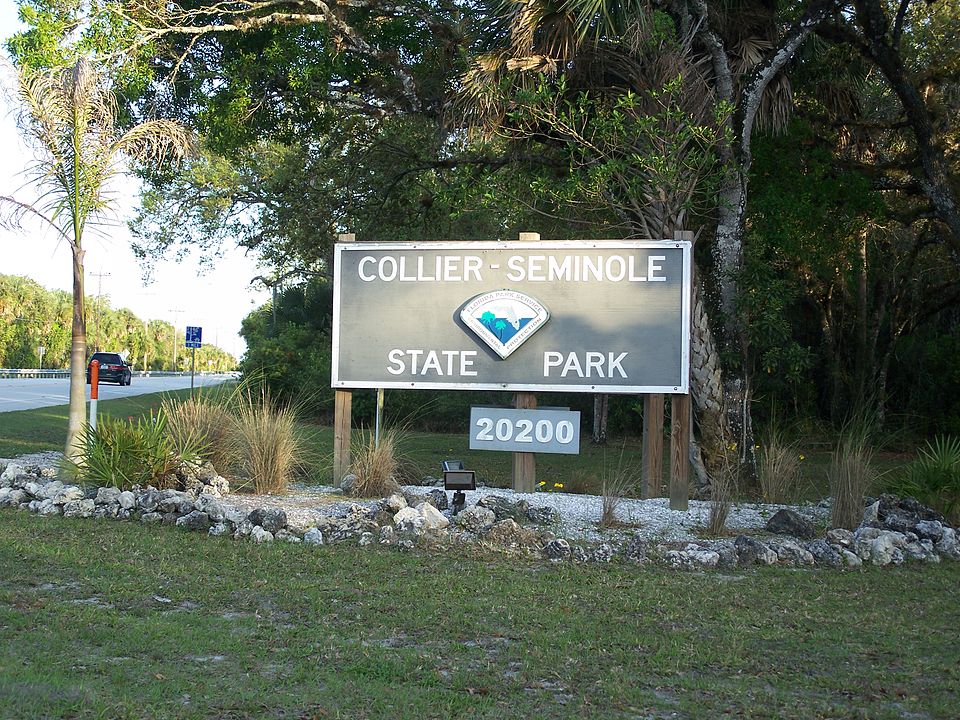Ever since I fell in love with The Yearling Trail, I’ve wanted to hike in more areas of the Ocala National Forest. This treasure is practically in my back yard. Taking friends into the forest to enjoy the peace and quiet and to appreciate the value of the Florida scrub is easily done. When I realized that the hike from Juniper Springs through the Juniper Wilderness to the Hopkins Prairie campground is only about 10 miles from end to end, well within the limits of what I can comfortably cover in a day, I got a small group together and we headed out.
A Chilly Morning
Every adventure I’ve had this year has involved an extra layer of clothing! This cold day was no different. A long sleeved t-shirt made a warm enough layer and was easy to peel off later in the day. We met at Juniper Springs and parked, comparing jackets and gloves, watching our breath condense in the air, and marveling at the chill, which we don’t often get here in central Florida.

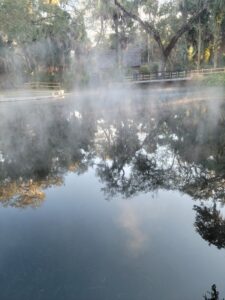
Some of us stopped to use the restroom (because, you know, COFFEE) while others walked down to the spring. At the springhead, we were treated to a primeval scene of mist moving like the spirit of God over the face of the water. We also captured a bit of sweet wildlife that none of us had seen before. We hope the little bunny gets safely home!
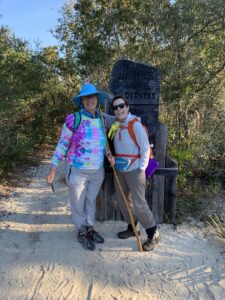
Photo credit: Lisa Kinsinger DuRant
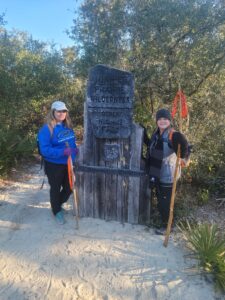
From the trailhead, we set out into the morning chill. The sun was fully up and our hands stiff from cold. Soon, however, the peace of the forest and the beauty of the trail took our mind off of the possibility of frostbite. By the time we reached the Juniper Wilderness, we had shaken off the cold and felt comfortable.
The Viking
Almost immediately after the above photos were taken, we met with what we collectively call The Viking. This guy wore a horned helmet, was enormous and shirtless, and carried an ax and a spear. His heavy guyliner looked, well, frankly he just looked dirty. Seriously, I was glad to be part of a group when we crossed his path. He was perfectly polite, though, stepped well off the trail to let us pass him and wished us a good morning. Fascinated by his ax, which was covered in fur where the blade met the handle, I asked him what he was chopping. He said it was for protection, so I smiled nervously, and walked past. Lisa, the selfie queen of our group, later said she couldn’t believe she didn’t ask him to take a selfie with her. I wish we had photographic evidence of the encounter!
That was, other than the little green bunny outside the restrooms at the Spring, almost (but not quite!) the only wildlife we saw on this hike. But the Wilderness has more to offer than wildlife. The morning sky was a cold, crisp blue to match the temperature. While we roughly paralled S.R.19 for a long part of the hike, there were also stretches where we were surrounded by nothing but stillness and silence.
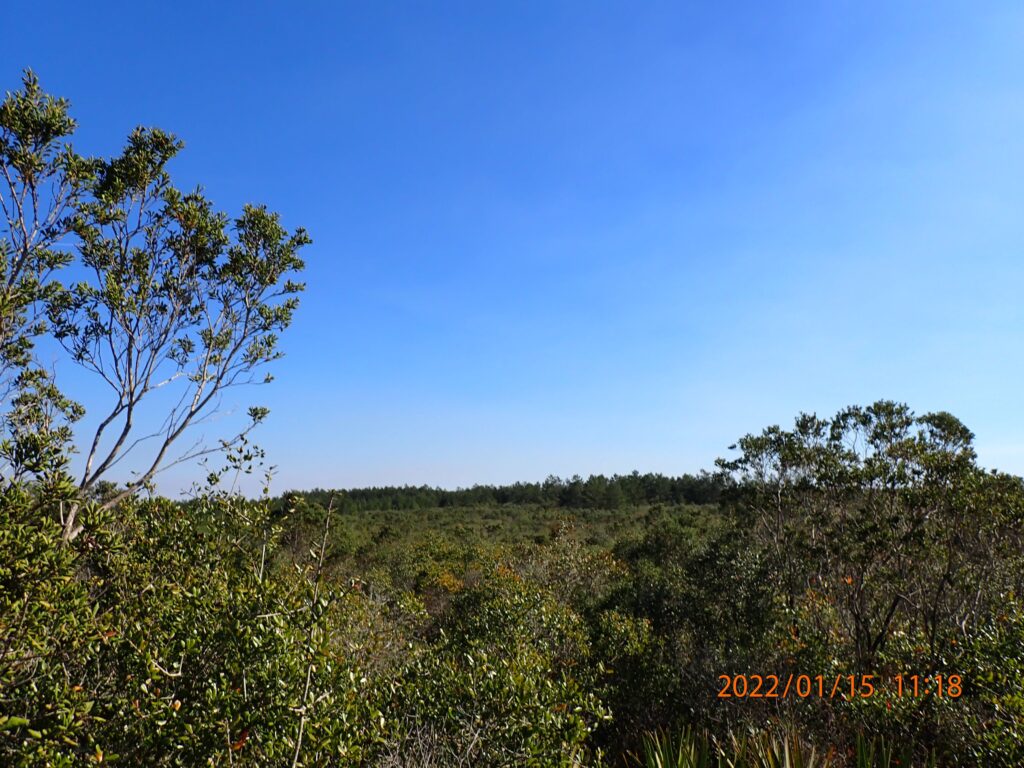
Water, Water Everywhere
There were two small creeks that we crossed before the halfway point of our hike. The first, Whisper Creek, had two skinny logs that we carefully made our way across. Whiskey Creek had a board as a bridge. Neither of these should make you wary – the water is very shallow and a good jumper could clear either of these little streams.
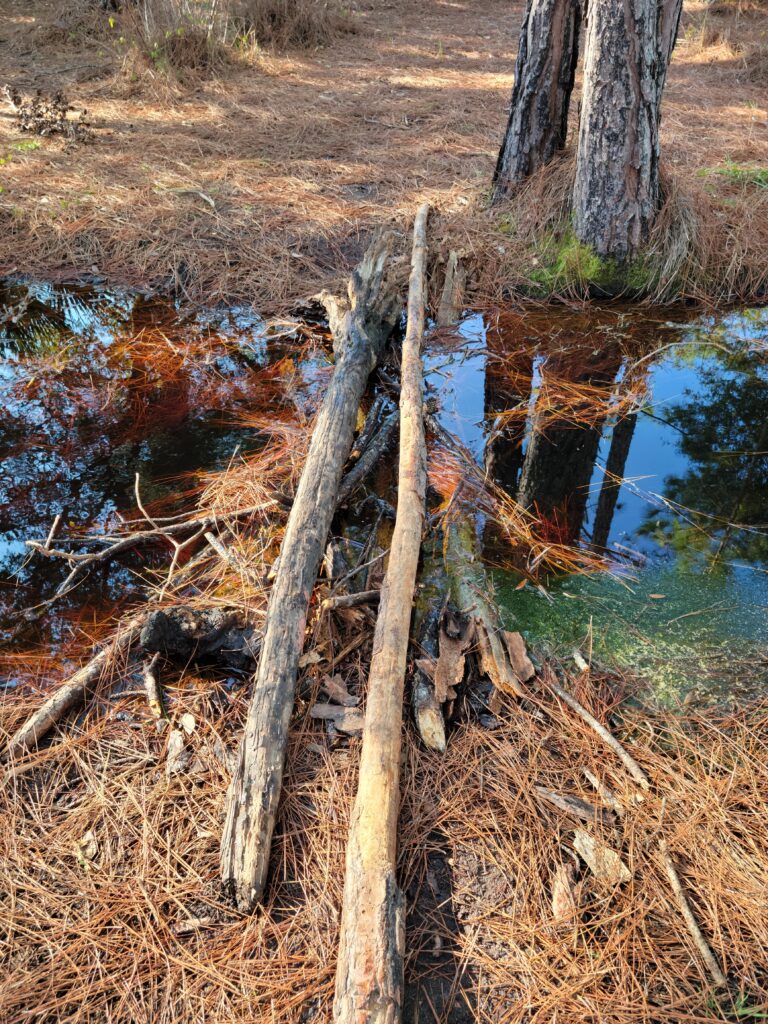
We enjoyed being apparently the only people on the trail. Of course, there were others ahead of us and behind us, but not close enough that we were aware of them most of the time. We loved the evidence of other hikers, like this key left in a crevice of the bark of a tree. Was it a message? Simply found on the trail and left in a visible spot? Who knows? What do YOU think it means?
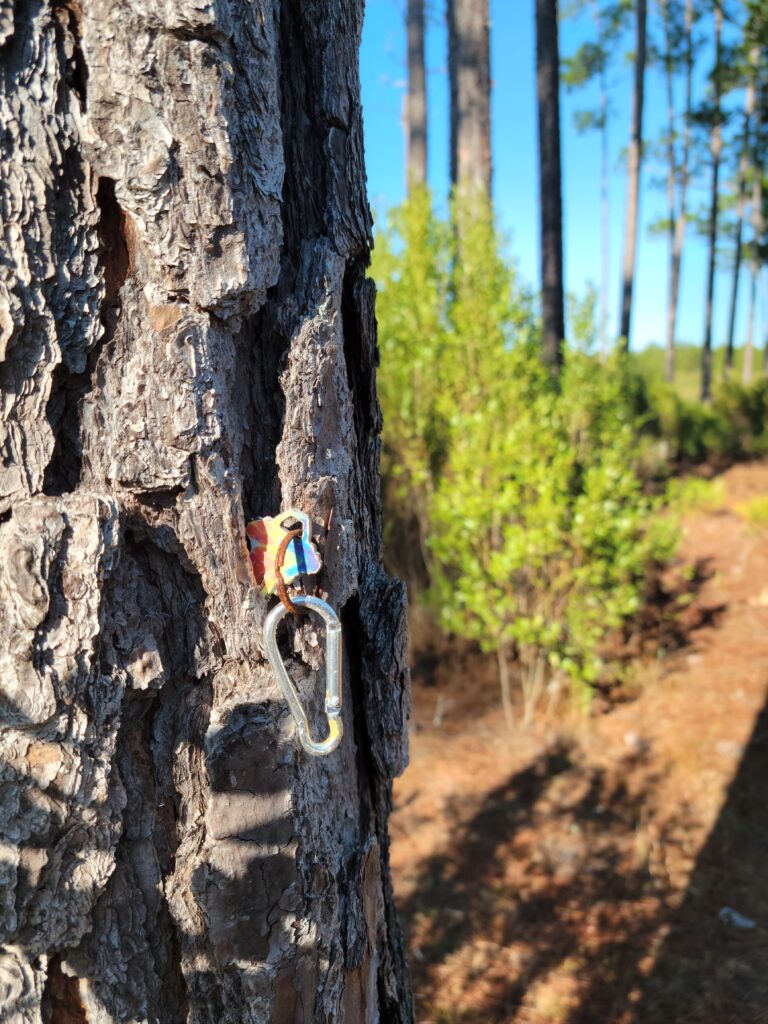
Hidden Pond
Hidden Pond is the approximate halfway point on the trail from Juniper Wilderness to Hopkins Prairie. I had read that the pond area is overused, with lots of garbage and rowdy campers. We did not observe this when we stopped to enjoy a raucous scrub jay’s welcome to this pretty spot. This was the first time Sue saw a scrub jay, and this one kept her entertained for several minutes before it moved on.
It is obvious that humans have made an impact here, but it was not covered in trash as I had expected. We enjoyed stopping for lunch and a thoroughly enjoyable rest. A Ranger visited with each group at the Pond to remind us to make sure all fires were put out completely. Once again, Lisa forgot to get a selfie. I wish she had, because that Ranger was pretty cute! He was also really nice and spoke with us at length about his experiences in other National Forests. I was disappointed that he did not recognize Ocala National Forest as the paradise it is. . .apparently he prefers mountains and year-round hiking opportunities. I must agree with him that summer hiking is nearly impossible in Florida.
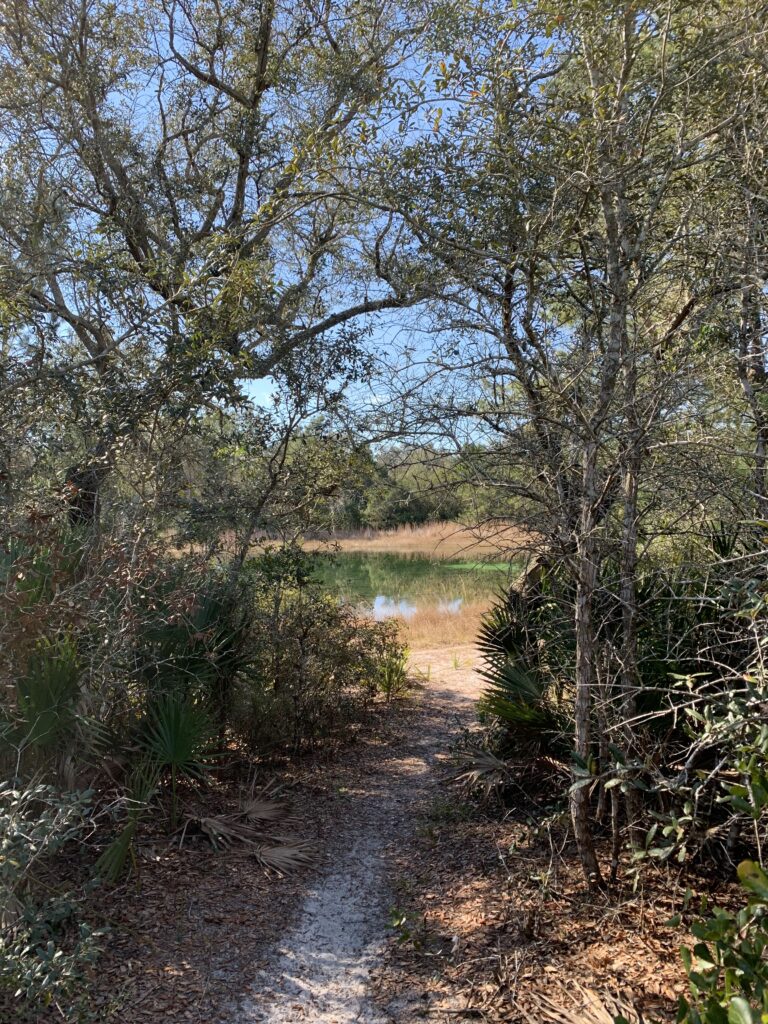
Steve and I love to take foot-selfies, to remind ourselves that we have traveled so many exciting roads together. Now I have a new group of friends with whom I can make fun memories and use feet as a reminder of travels.
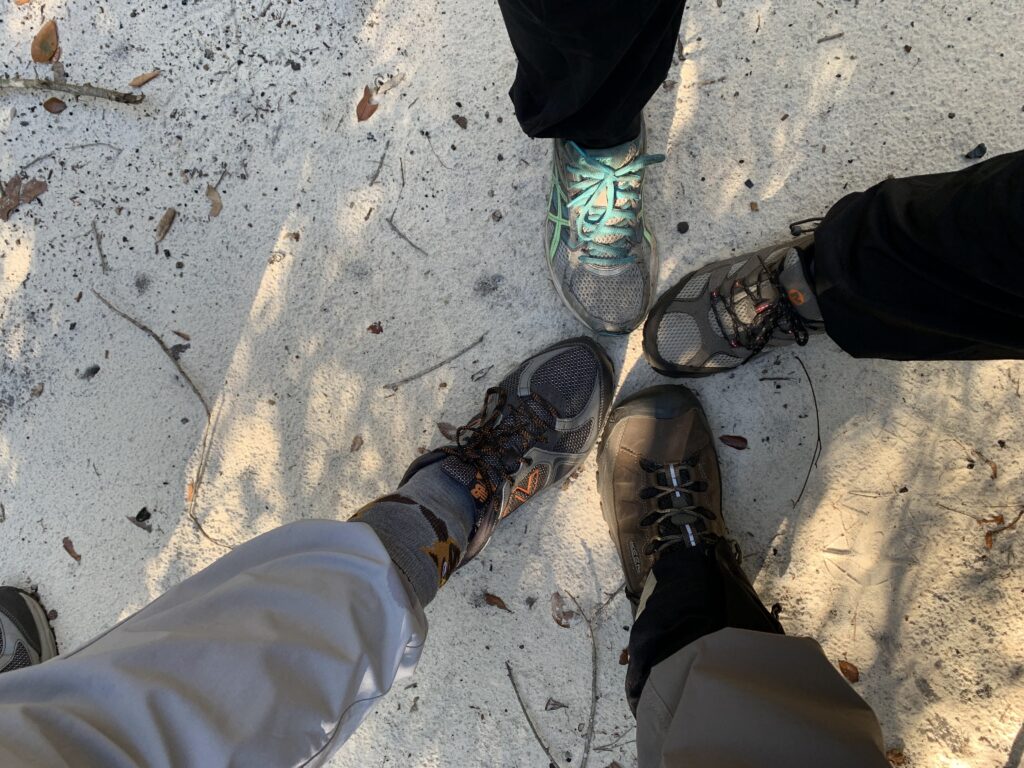
. As the Girl Scouts sing, “Make new friends, but keep the old. One is silver and the other is gold.” Lisa and Judy are my gold friends, and Sue is silver. I’m glad she joined us on this trip and hope we will share hikes together frequently
Yearling Trail Detour
We finished our hike with a detour to the Long Family Cemetery and the Yearling Trail sinkhole. These beautiful spots are refreshing and soothing. If you hike the Juniper Wilderness Trail, I highly recommend making this short detour. We watched a pair of hikers playing at the bottom of the sinkhole, and they found a rope swing! As many times as I’ve looked into that gigantic hole, I’ve never noticed the swing before! There’s always something new and wonderful on these trails.
